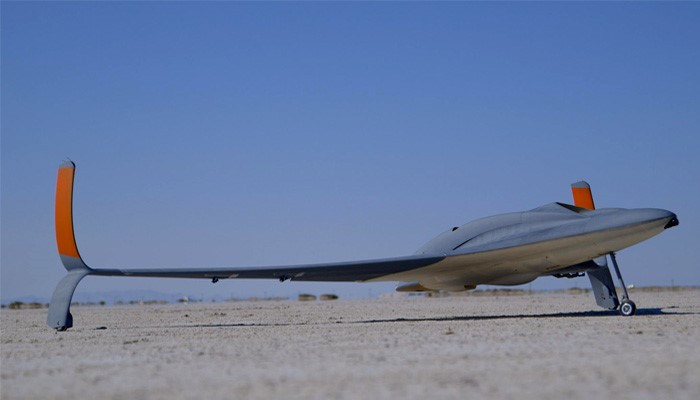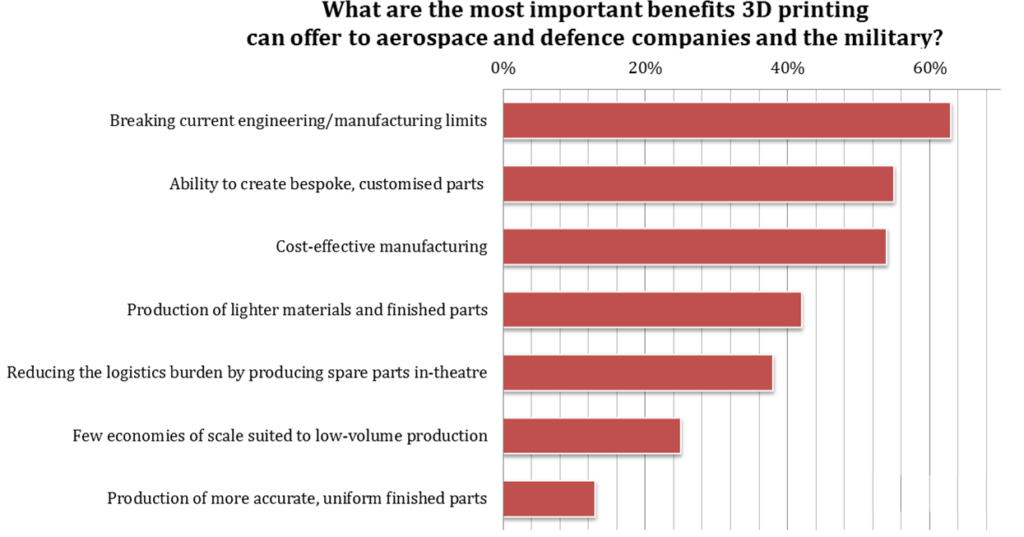The aerospace industry is that industry in which other industries look to see a glimpse of what’s on the horizon. The aerospace industry is one of the oldest industries to adopt cutting-edge technologies. It is the first industry to bring in carbon fiber, the first industry to introduce CAD/CAM processes into its design chain. There are many other examples and Additive Manufacturing (AM) is no different capturing 12% of the total AM market.
Summary
The Economist has remarked on additive manufacturing using 3D printing was the 3rd industrial revolution. All discontinuous and disruptive innovations follow the same adoption curve, except in this generation. Now exponential technologies and digital connectedness are causing disruptive innovation and steeper adoption bell curves as implementation rates accelerate. Additive manufacturing is a disruptive innovation and it is ready for aerospace manufacturing now for both smaller components to an entire fleet.
Very much ideal for small volume and customized production, additive manufacturing is enabling a new, iterative design-build process – allowing lower-cost production of lighter weight components, completed products in a small amount of time, which was not possible a few years ago and it is confirmed by the Research and Markets. By disruption, researchers are predicting a substantial growth of 23.01% between the years 2017 and 2021.

Growing Few More Leaves
Aerospace innovators are passively owning additive manufacturing beyond just prototyping and scale models and are aggressively pursuing new use cases for the technology. Some leading aerospace manufacturers are already using this technology to fabricate jigs and fixtures, production tooling, and final end-use parts for lightweight wing assemblies in small aircraft and UAVs. It is evident that innovation in aerospace is accelerating, advancing frontiers of understanding at the component/ product level in manufacturing operations, in comprehending supply chains, and, in some cases, at the business model level. Parts can now be created with complex geometries and shapes that in many cases are impossible to create using any other technology. Low aerospace volumes and a slimmer supply chain make additive manufacturing an attractive, lower-cost alternative to replace conventional CNC machining and other tooling processes for smaller-scale parts and finished products and assemblies.
New additive manufacturing design flexibility encourages simpler, lower-cost design and assembly through designing-in fairness. Additive manufacturing poses a competitive threat for laggards wedded to status-quo methods for prototyping, tooling, and custom part production using CNC machining, aluminum casting, and injection molding.
Challenges to Face
The biggest challenge the aerospace industry faces during the application of additive manufacturing is the volume of construction and manufacturing large products. Additive manufacturing sets a very strict restriction in building large aero components and the downside to that is most of the aerospace components are large especially in aircraft fleets and carriers.
But nowadays, manufacturers like Genera Electric have done everything in their capability to make sure that the size of the component to manufacture should not be a setback and they are manufacturing fairly large components. This is not a very complicated obstacle that cannot be overcome and with emerging technologies and expansion to the frontier, in the coming days, not only big manufacturers like GE and Stratasys will dive into the challenge but every other manufacturer in the market will be able to capture their limitations.

Despite popular beliefs, the biggest obstacles in implementing the new manufacturing paradigm today are internal, based on breaking down status-quo beliefs around what’s possible and rethinking existing tooling and manufacturing methods.
Existing human processes and behaviors are hard to change, however, and manufacturing without a traditional factory is today an unrealistic concept. On the contrary, we are witnessing accelerated adoption in specific applications and industries such as aerospace and a general spread of the use of technology as designers and engineers expand the frontier of the possible.
Unlocking investment capital and resources to adopt new design and manufacturing techniques is difficult for some aerospace OEM’s and suppliers, locked into a quarterly driven revenue cycle and budgets.
Top 3D Printed Aeronautical Components/Structures
The ability to create lighter, stronger components under such low budgets has expanded the abilities of the aerospace industry to create complex components. After thorough research, we have found the top 7 applications of 3D printing in the aerospace industry:
Plane Seat – A lighter plane seat has been 3D printed by Andreas Bastian, an engineer at Autodesk which weighs 40% less (766 gm) than a conventional plane seat. He created the ceramic mold after creating the plastic mold using 3D printing to obtain the final piece.

- Safran Helicopter Engines – Safran Helicopters recently launched a new range of helicopter engines. The Anteo-1K engines have 3D printed parts, including parts inside the combustion chamber. Additive manufacturing has enabled Safran to reduce production costs without compromising engine performance. These 3D printed engines created are almost 30% more powerful than those previously manufactured. This increased performance helps helicopters in departments such as search and rescue missions.
- Fuselage Panel of STELIA – STELIA Aerospace has recently changed its interest into AM to created their first 3D printed reinforced fuselage panel. They carried out the project using Wire and Arc Additive Manufacturing (WAAM) technology. It’s one square meter demonstrator shows that additive manufacturing makes it very easy and flexible to design the stiffeners of the fuselage panels, offering more design flexibilities.
- Pratt & Whitney Engines – Almost twelve parts of a Pratt & Whitney engine has been created using AM, engines that now equip Bombardier aircraft and carriers. These are mainly fasteners and injection nozzles 3D printed from titanium and nickel. Pratt & Whitney has saved almost 15 months over the entire design process and the final weight of the part has come out 50% less than the conventional. The engine manufacturer has used electron beam melting (EBM) and direct metal laser sintering(DMLS) technologies.
- Stratasys’ Drones – Stratasys collaborated with Aurora Flight Sciences to create and advanced unmanned series of aerial vehicles with jet propulsion in the year 2015 which can fly faster than 150 miles per hour and it is called the UAV. More than 75% of the vehicle’s parts have been 3D printed manufactured through fused deposition modeling technique. A lightweight but high performance material, the ULTEM 9085™ was used in this printing.

- Perdix Drones by US Army – US Army in collaboration with researchers at MIT designed ‘Perdix’ drones and tested successfully. The US Army are no strangers to AM as they have previously created concrete barracks using 3D printing. 103 drones perform collectively as one brain and don’t act individually. In order to avoid crashing, they use sensors to maintain a safe flight distance. They have the ability to jam enemy radars.
- Hoversurf’s Flying Car – Hoversurf is known for creating unique hovercrafts, Socrpion-3 being their best development so far which can fly one person. Hoversurf has announced to launch their new car Formula by next year whose parts are all 3d printed. It can attain a speed up to 300 km/h and will carry 5 passengers. The best feature of Formula is it can be parked in a normal parking space as its wings are folded up. It is an electrically driven car.
Production
Apart from prototypes and tooling, 3D printing produces stable end-use and durable parts – thereby bypassing the production line. Stratasys uses a series of materials, including thermoplastics, to create parts with high mechanical, chemical, and thermal properties.
Sybrant reported that low-volume production being a market segment hasn’t been covered well. Outsourcing molding houses won’t accept any order under a certain number or maybe they charge a little too high to keep the profits alive and hence in-house manufacturing made more sense.
Boeing makes aircraft for various airlines. Even if the plane itself is evidently the same from one order to the next, the interiors and its parts vary and as a result, a particular air duct may bend to the right instead of upward, for example. Boeing doesn’t want to have to use a $40,000 tool made overseas to manufacture just 25 of these parts. This is where 3D printing comes to play and they directly make finished multiple products for plane interiors.
The real turning point in the acknowledgement of AM was the extensive application of metal-based AM since 2011. These industrial-grade AM provides better reliability in terms of speed, cost, and materials rationalization.
Major companies in the US have subsequently realized the advantages of AM over conventional manufacturing and have been using AM to achieve supply chain efficiencies and lowered time-to-market which resulted in much-needed attention in policy and regulations in the US.
The Future
In the aerospace industry, additive manufacturing has become oxygen for manufacturing and its applications don’t only limit to components design but also to ground support and repair.

The outcomes of acknowledgment are clear and simple; AM is accelerating change in this industry and more companies should accept and learn to leverage this technology. Whether in prototyping, tooling or short-run manufacturing, AM is essentially capable to be agile and remain competitive in this modern changing world and technological sprint.
